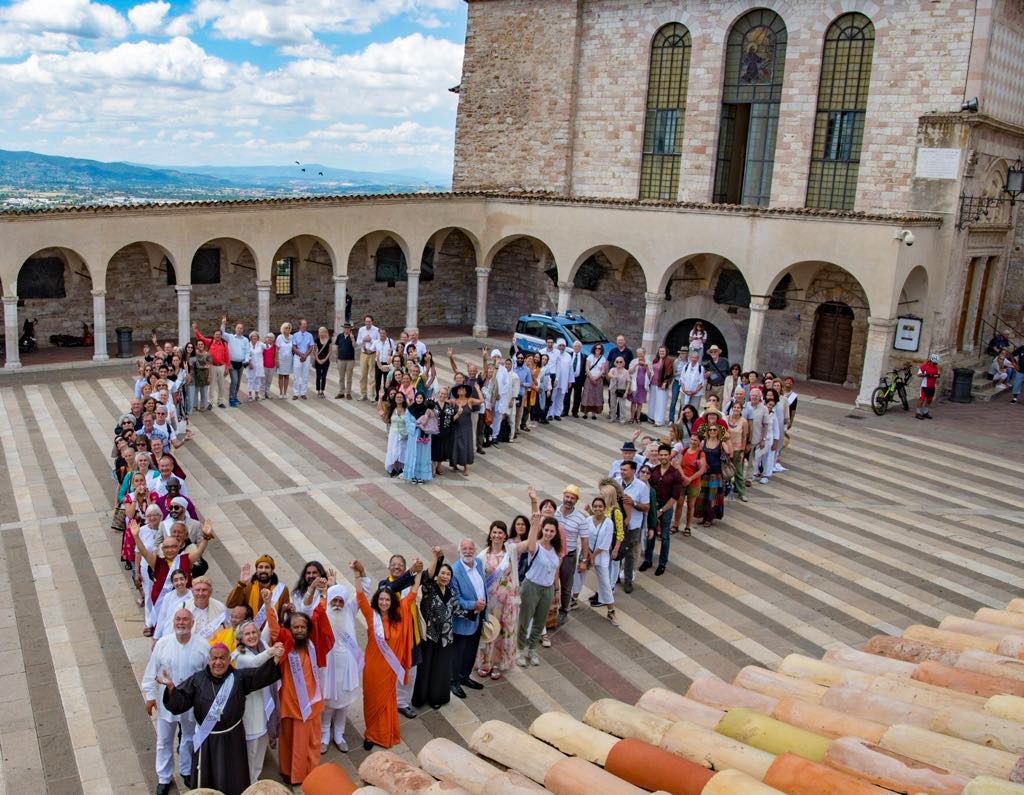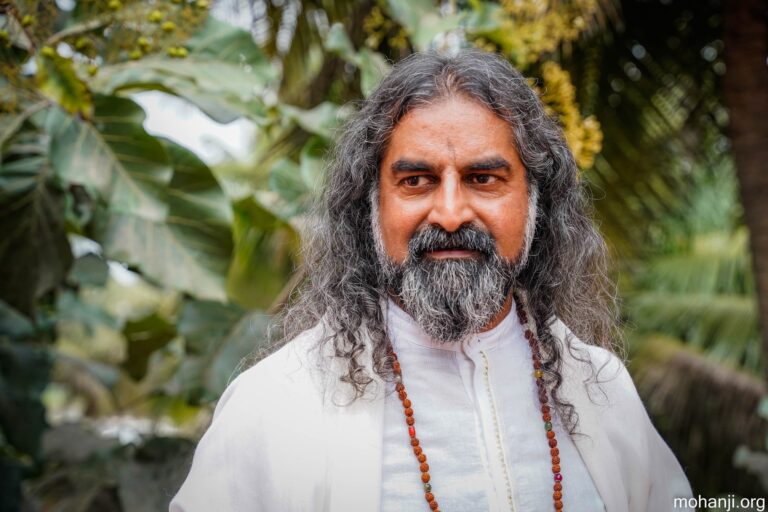Brahmarishi Mohanji, a spiritual leader and a messenger of peace, attended the historic Peace Pledge Project at Assisi, Italy from 28th to 29th June 2018. This historic event saw more than 100 spiritual leaders, business leaders, educational and environmental leaders who came together and emphasized the importance of universal loving-kindness and compassion for all beings. This global event demonstrated to the world our mutual friendship, respect and common goal for a peaceful world nurtured by wisdom, compassion, unity in diversity, forgiveness and reconciliation.
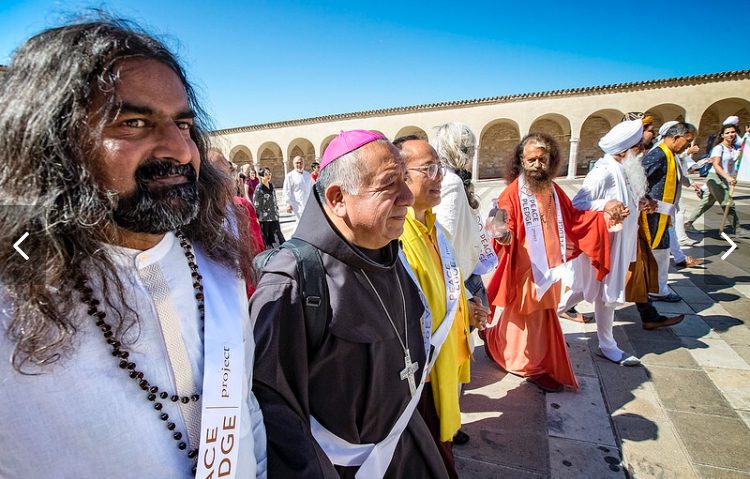
He also attended Peace Pledge Project in The Hague, Netherlands in 2017. You can read his speech here.
And watch the message
[youtube https://www.youtube.com/watch?v=y3qdsORdtxA]
Assisi, a small but powerful town soaked with divine energy, the place where Saint Francis was enlightened and had communion with the Supreme Consciousness. With his love for nature and all beings of Mother Earth, St Francis spent his life serving all beings from this pious place and finally attained liberation.
Assisi displayed the unconditional love, the warmth of compassion and peace in every inch. This resonated completely with all in the presence of Mohanji.
Many renowned Masters and leaders were gathered in this multi faith event which aimed at bringing awareness to peace in humanity.
Mohanji’s ease and compassion towards everyone was evident in His gestures and the radiance that He was bringing in their faces.
To simply observe how Mohanji was living “Loving-Kindness, compassion and unconditional love” every moment, not just in words but in actions, was a wondrous, eye opening experience.
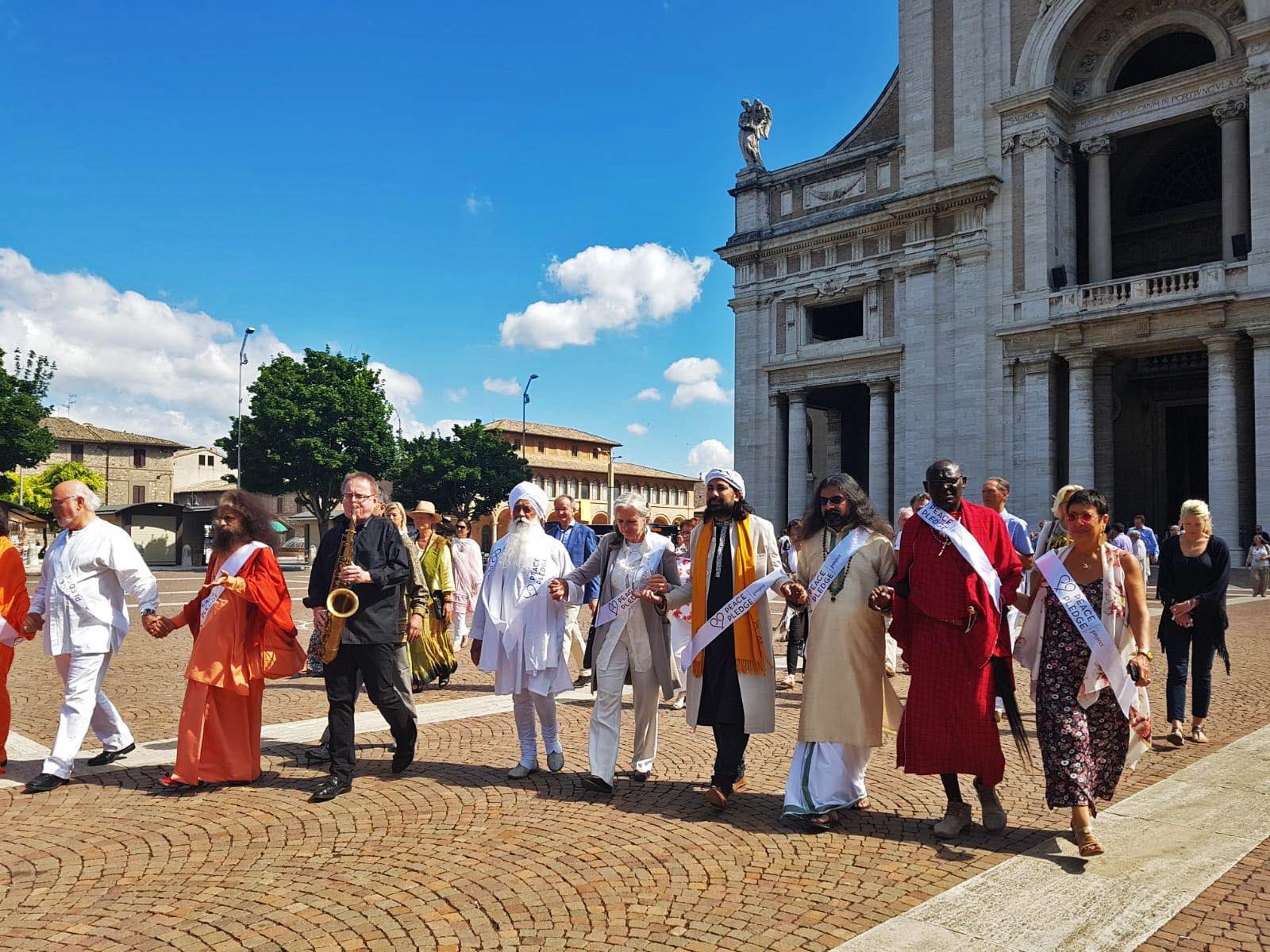
Mohanji’s First (recorded) Speech
During lunch time they explained this idea to me, the first thought was, it’s a conscious lifestyle. Being aware. Being conscious. We are controlled by the temptations of the media. One sign is, we keep changing mobile phones. I saw this mobile phone which can be pieced out and changed when needed. I think there is no such mobile phone available at the market today, because they expect us to change the mobile phone with the new features every time. This has become a habit. We have learnt to live like this because it is a consumerist society. We are not worried about what happens to the materials we have used and where they are going (i.e how they are disposed off).
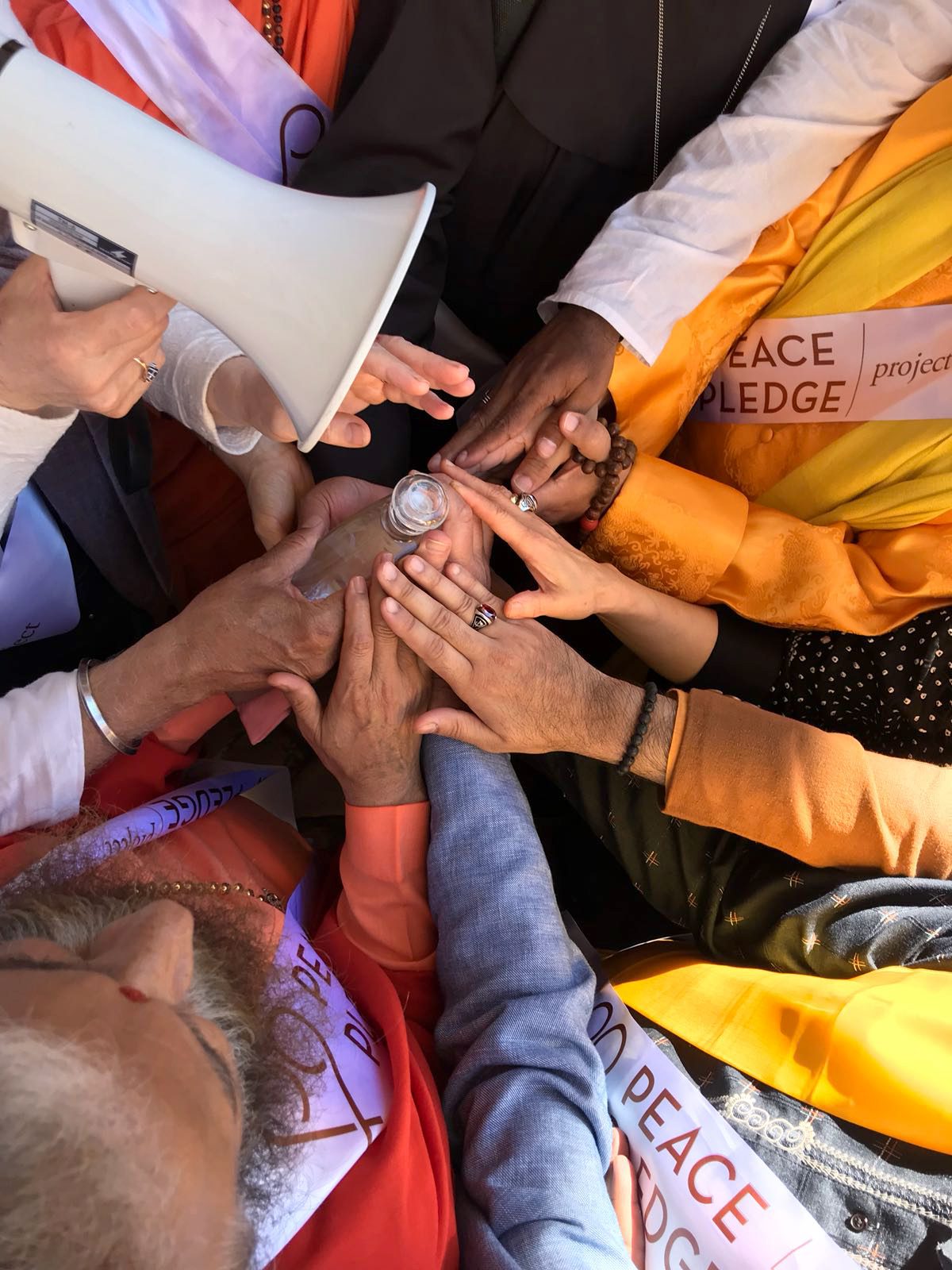
Therefore I just categorised two aspects:
One is the internal space – the internal space which has feelings, emotions, etc. and it is also the seat of contentment. Furthermore, it is based on needs. It has a root, a bhaav or a flavour – silence.
The other one is external – the external is all connected to noises. So one is silence and the other one is noises.
I am only talking from the spiritual point of view, as I am not an expert in the circular economy. But from the spiritual angle, I would say this is a conscious lifestyle. It is connected to the external space, our addiction to things outside and how this addiction is maintained by the media or the temptations that come out of the media which make us spend on a particular frequency, whether we like it or not. For example, “if you buy two, you will get one free,” – we will buy it even if we do not want it because of the temptation, the greed factor. It is not the need factor any more. It is the greed factor. Then it is unconscious existence. We are existing more or less unconsciously and we are driven by things outside. We do not even look inside (to see) whether this is leading us to contentment. Contentment factor is definitely not there. It is about just managing a lifestyle of unconsciousness. The noisy world is filled with materials and we are connected to the fancy towards it. It is blind consumerism because we are not even worried about how it comes i.e. how it is produced or it’s source. Actually I was talking to my wife… my daughter was saying, ”I don’t like this food. I want another food…” so I asked her, “Does she know where this food is coming from? And how many people have worked to get this food on your table? It would be a good idea if she knows, because even if it is one grain, there is a lot of sweat and blood behind that grain. It is easy to discard it. We think it is ok, we will pay money and obtain it. We should also know where the money comes from. This awareness is missing most times.
The media control leads us to restlessness. When we see new things in the media, in advertisements, etc. we feel we should have it. Whether it is a car, a phone or anything new – “Oh, this has better features! It is better than what I am using now. Why don’t we go for it?” Sometimes it leads people to debts and further insecurities.
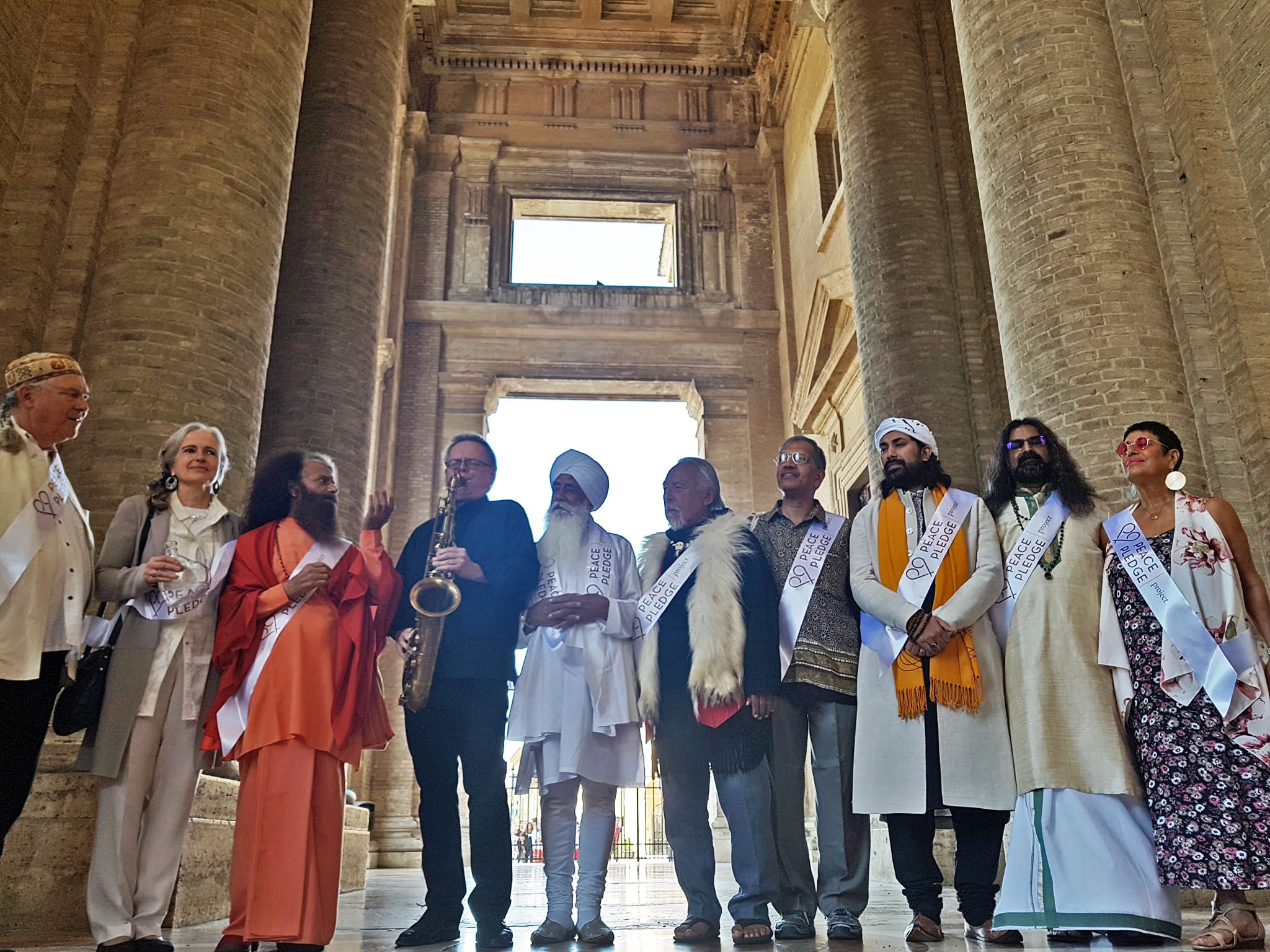
It maybe even connected to boredom. We are bored with life, we are bored with monotonous things. Sometimes it is comparison with other people, “My neighbour has got a new car, so I would like to get another one.” This is triggering the need for changes. It is not that we need it. The car is still moving and working well. We can use it for some time, but we change it because we think it is time we have proven something to this world, it maybe to prove that you have more money or better means, or whatever. The greed factor is maintained all the time. It is not the need factor any more . Then it leads to insecurities. We are always in a mode of insecurity, we need more and more. We are pleasure oriented, not satisfaction or contentment oriented.
The way we approach the world with surrender, things happen and we are reasonably contented with the lifestyle. The demands are less and that leads to peace. People are not talking about peace. People are talking about materials, what else we need and what other things are available. All in all, life has become an unconscious pursuit. We must lead to a conscious lifestyle. It is all boiling down to conscious lifestyle. Being aware of what we are doing here, why we are doing the same and whether it is necessary. Buddha said, “Just before you speak, ask yourself, if you are going to talk with kindness.” Similarly, one could think, “ Do we really need it? Is this thing really needed or are we using our emotions and are getting carried away with what we see on the television?”
That is about it. That is more or less what I wanted to say.
Mohanji’s Speech at Basilica of Saint Francis
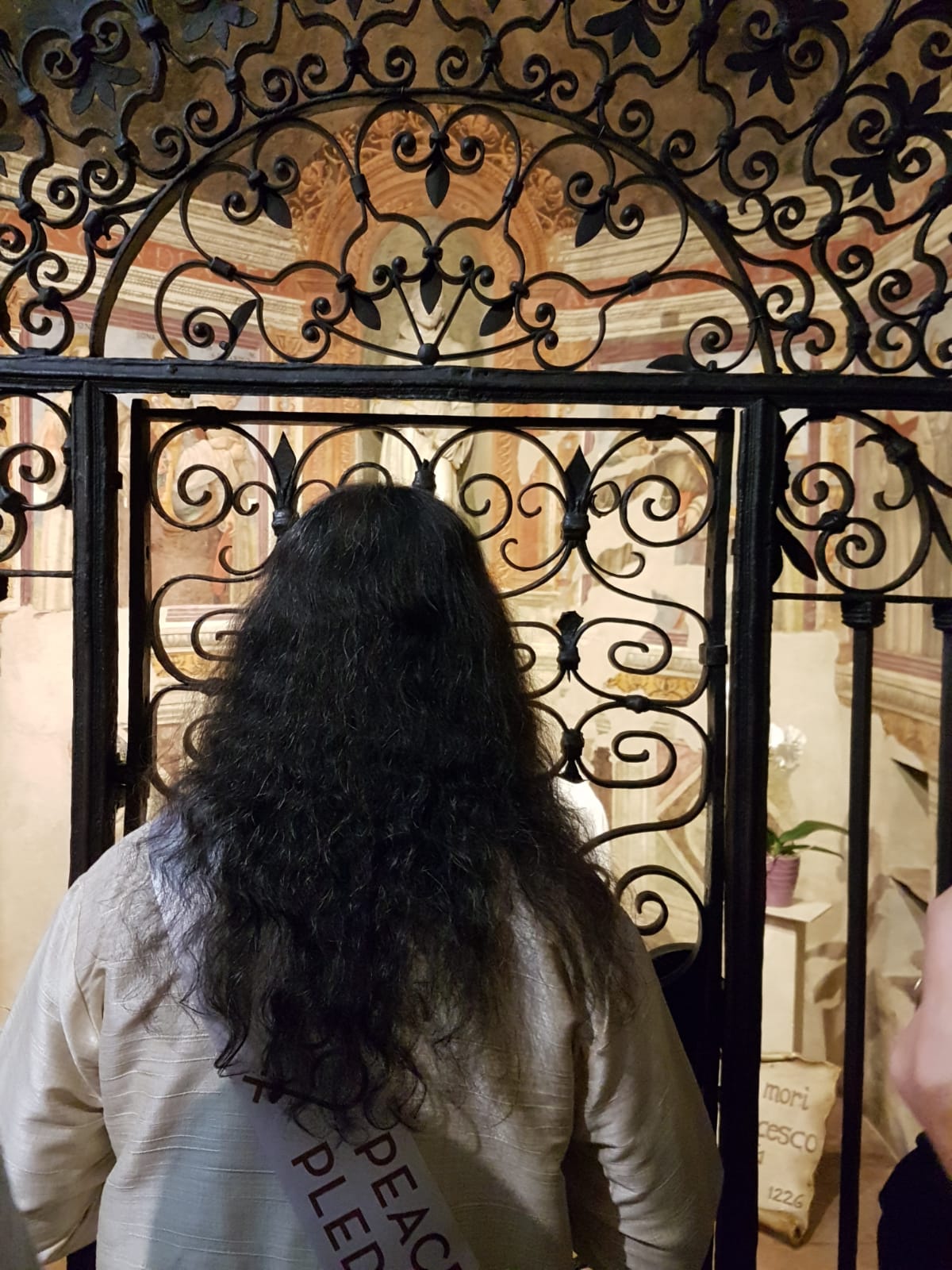
I bow down to the great Master who united us here. I also bow down to the traditions that we brought here. These are all drops of the same ocean.
This is a leased body. This is a leased life. There is a duration. This remembrance could help. When we feel that we own the land or own anything, when we feel possessiveness, possessions and various dimensions of ego, this remembrance might help – that we are here on a leased life, on a tourist visa, we have to go back. We only carry some memories and some desires. If we do not have control of our desires, we keep coming back. It is important to understand WHO united us here, I bow down to the great masters and the tradition that brought us here, all the traditions that brought all of you here. I bow down to all of you. When you do not exist, you see only yourself everywhere. If you see differences, understand it’s the mind. Only mind can see differences because you are always unique. That’s the way we are created. We are neither high, nor low, nor equal. We are unique. If we understand that, let us express our highest possibility into this world which is goodness, loving compassion, kindness, instead of greed, hatred, possessiveness, revenge and insensitive lifestyle.
I bow down again to the Lord who brought us together, who is called by many names, and whom we think of in many forms and formlessness. I bow down to the unique creations that He has brought on this world. Thank you.
Mohanji’s Speech at the Conclusion Ceremony
on 29th June 2018
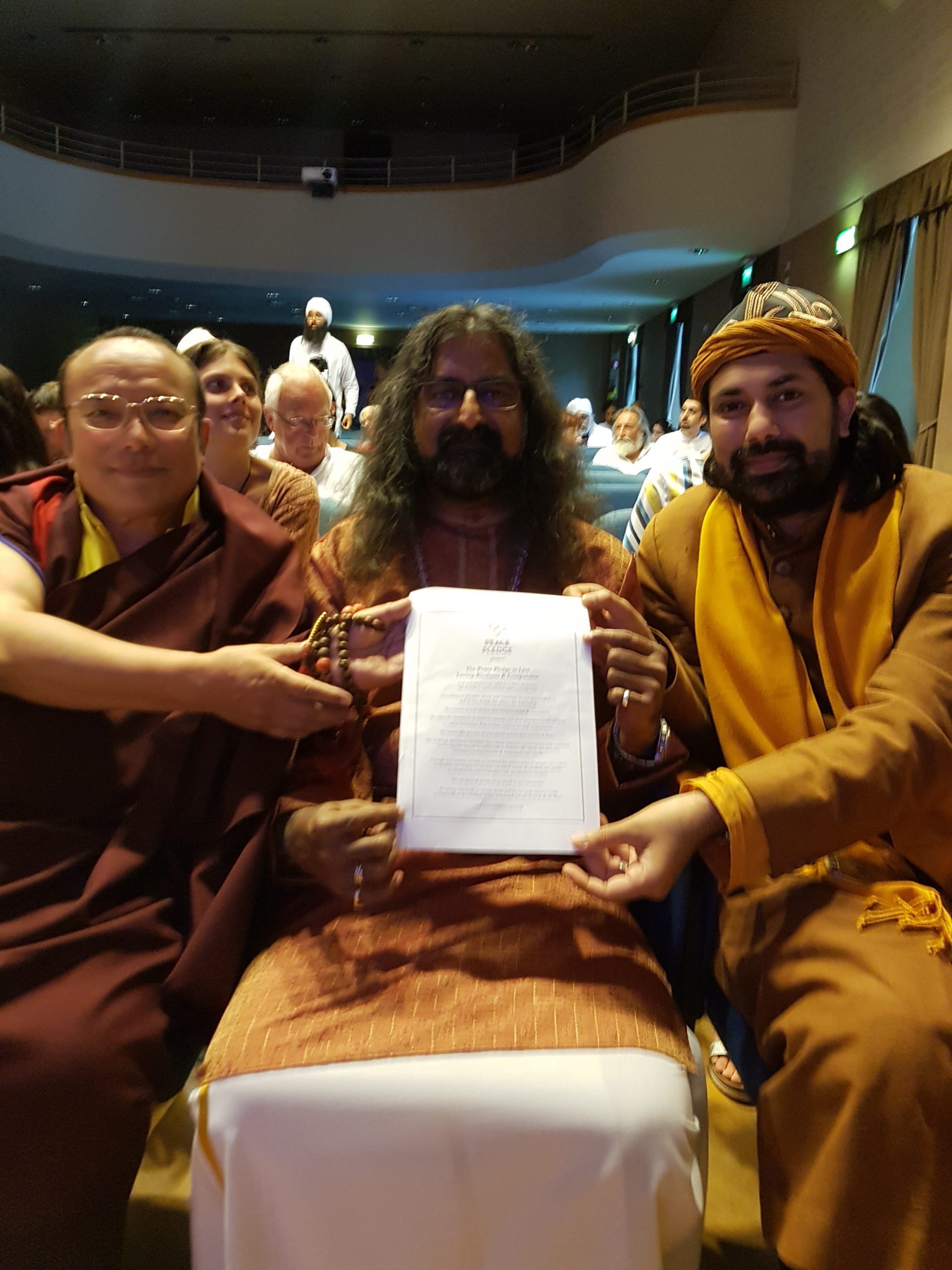
(Note: recording started after a few sentences)
…The second point that Swamiji said is about the conglomeration that is going to happen in Kumbh Mela. This is the highest message of peace at this point in time. At one place, millions are assembling in the name of peace. No conflicts. Everybody is the same. This is a very powerful platform to express something. And the third point to note is I have been assisting in whichever way possible; we have put out the Peace Pledge Project on our website last year and it is still there.
Visibility factor should not focus just on the websites. Not many people visit websites; not many use Facebook, we might as well forget about Twitter and other social media. Visibility has to be through multiple means. We have program called Conscious Walking. It is basically for unification, being in your own energy and walking. This is very popular in Europe. They have T-shirts: ” Walking for Peace”; “I am a Walker for Peace”.
These T-shirts go very well. People look at it and say, what is this? What Pujya (which means revered) Swamiji said was the same thing, if you want to convey the message, convey it through pictures, images and that goes a long way. If we are talking and not expressing, it remains as a theory, an idea. Therefore I think the next step should be focusing on the visibility and that should not be only through the platforms which are type-cast, like Peace Pledge Project. We have united here to create a formula or patterns or an understanding. But peace is a state. It has to be a state. It is a state where you are contented, you are balanced. That state has to happen through various methods. When I was in Iraq in 2004, my bodyguards were kidnapped, my four-wheel drive vehicle was blown up; each day was a survival. I know how it is… a child once told me, “If I get a knife, I’ll kill a man.” He had that kind of anger, a feeling of revenge within him. Such situations cannot be changed just by talking about it. You cannot suggest to them, ”please meditate and improve.” It will not work. I can tell you right now; next generations to come i.e. future generations will look at us and call us a barbaric generation. This is going to happen. They will call us a barbaric generation because we have no idea of what we are doing. From a macro perspective, this is about all governments and people. People who believe in peace and who are doing something about it right now may look like fools, but in the future they will be trendsetters.
Technology has given us this opportunity for visibility and the highest level of visibility is through videos and short presentations. I fully agree with Pujya Swamiji in this regard. Attention levels are very short; today, it is 8 seconds. In 1986 we used to say that if one can convey a message within 15 minutes, it is good enough. Contrast it to today when it is 8 seconds! At the end of 8 seconds your attention is no longer available; so if you cannot convey something within the first minute or so, you cannot convey it. That is the level of our imbalance or disalignment. Alignment of body, alignment of mind, alignment of intellect, alignment of ego i.e. personality is important. But there is definitely no alignment at all. Through various religious paths, systems, methods, contemplations or meditations, we are trying to convey, but at the end of the day what we are achieving is complete anarchy in the whole world. We talk about religion and religions are killing more people, not diseases, illnesses or an epidemic. Religions are killing people. What harmony are we talking about?
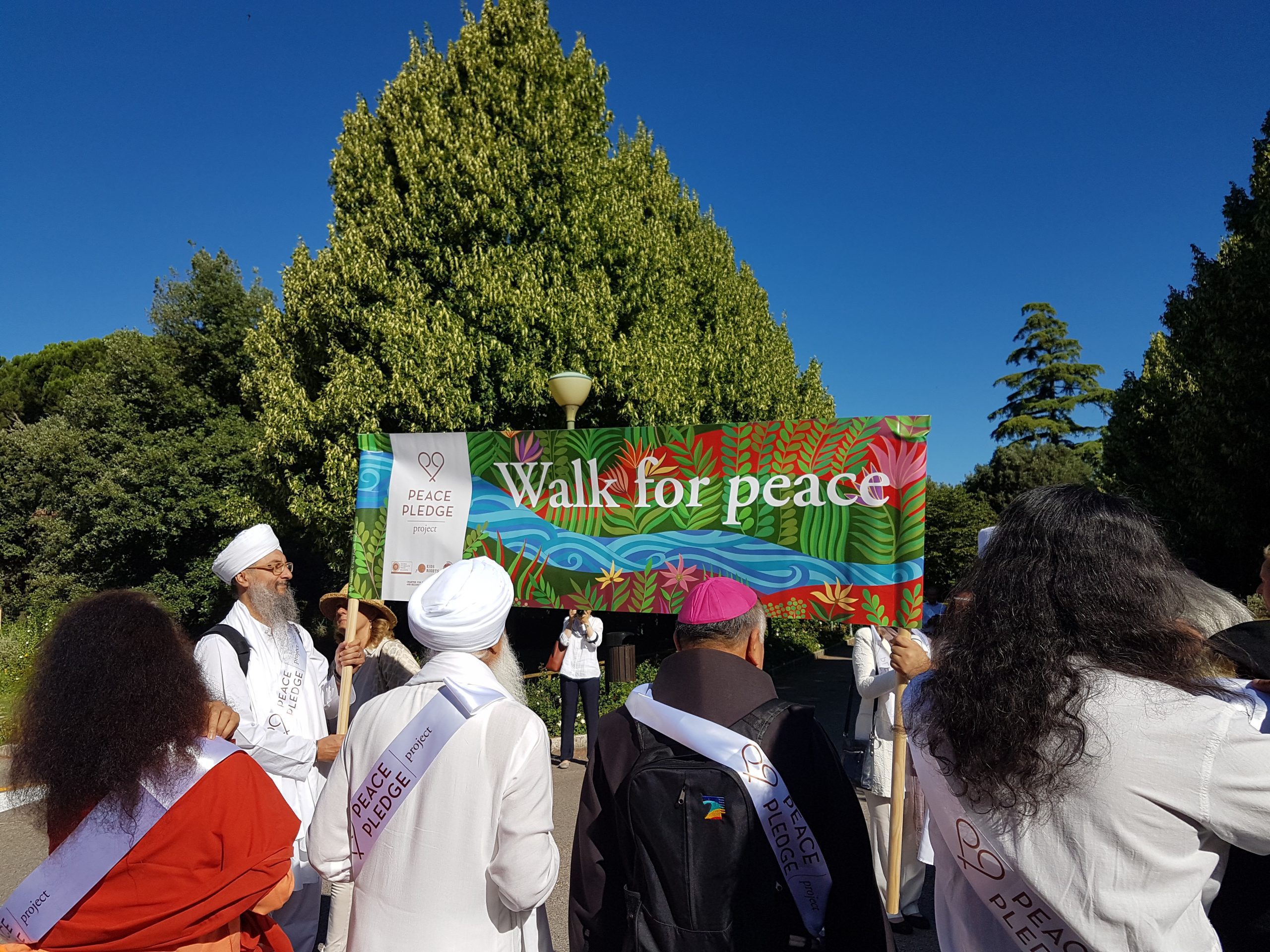
I completely agree with Swamiji, that we should use these platforms well, especially Kumbh Mela. It is a very, very powerful platform and people should wear T-shirts, hats or whatever it takes. I believe that if we present the idea to the corporates, they will fund it. The idea of peace is one everyone may feel about. We should not just talk among ourselves and within our organisation. We could be weak on our own, but collectively, we could be a power. If all of us can speak to our own network, all those in our contacts, it could be a movement. And it should be visible. If it is not visible, it is not good enough. Also, do not depend too much on websites and platforms like Facebook, etc. They are temporary and do not stay. They keep moving, so you have to keep telling something each day. And if you don’t have a team to keep inspiring people, the whole idea is lost. We will talk about the same thing in the next program; that is not good enough. People should FEEL. People should ALWAYS REMEMBER. Peace, as I said earlier, is a STATE. That state has to be attained. When the state is attained, nobody can disturb you. Until we reach there, we need to do something. This is my humble opinion.
Q: Can you tell us some recommendations how we can operationalise your insights?
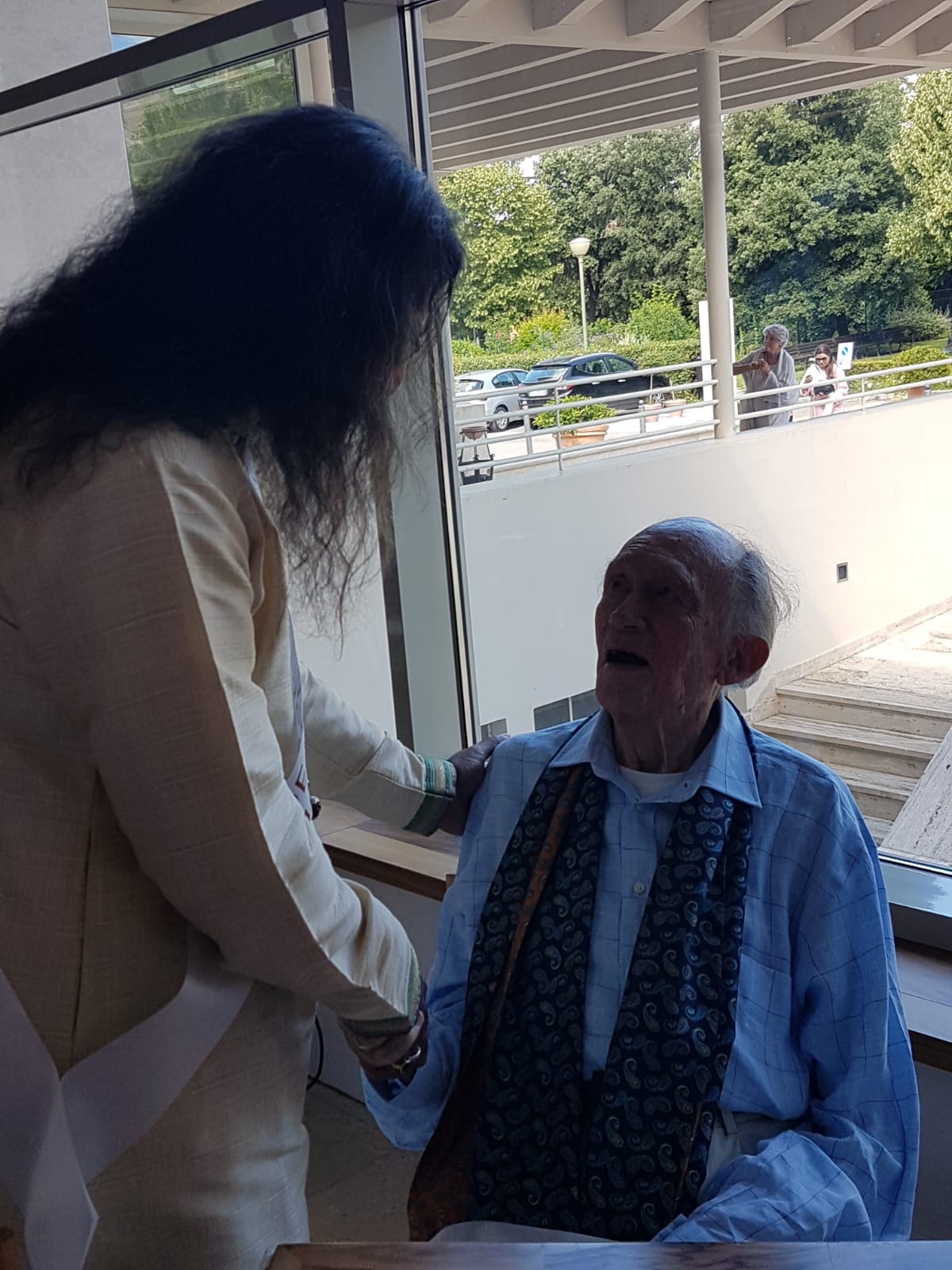
Mohanji: I would like to continue what Pujya Swamiji said. One thing is that short videos are very powerful today.
Participant 1: How many videos do we have? Or speeches? They could be edited into short videos. I would say that we have at least 20 hours of material. Would that be correct?
Participant 2: Something like that, yes.
Participant 3: Johnathan, I have about 25 1-2min videos of many people.
Participant 1: Ok. So, Mohanji, we have potentially 30 high quality, high definition, really good quality material, we have about 20 very heartfelt, sincere, not only visually quality but high quality material. How can we get that to as many people in the best way possible?
Mohanji: Today, I was listening to a discussion on the media on how to grab attention. Even adults watch cartoons like “Tom & Jerry”, something funny, which conveys a short message in a short span of time, not long conversations or philosophies. They may not be interesting for all. For some people these might be suitable, but we are talking about 7.5 billion people. We need to have these videos or short presentations, which convey a message in a subtle way, while making you feel. This is a real art and many are practising it. We can also use images, like ice melting in Greenland, in other words, make it visual, as much as possible.

Participant 1: So you are giving editing suggestions of the material and make it more compelling.
Mohanji: Absolutely.
Participant 1: You can talk to Jonathan about that. Jully has the interviews which are just in a lovely environment that are not visually that striking but are short, crisp and content rich. How can we apply that?
Mohanji: It has to be edited into one sentence each and put together; it could be many faces coming forward so that in a minute about 30 or 50 people are talking, even one word will grab the attention; not necessarily a full sentence or complete conversation. This is because attention level is very weak these days. I think that is what you, Pujya Swamiji meant (turns to him) when you mentioned crisp videos. That is exactly the point.
[youtube https://www.youtube.com/watch?v=T7wx2i5W6Xs&w=560&h=315]
Participant 4: Mohanji, I see two real needs from what you said. One is corporate sponsorship. We need, anyone who has talent in that, who has good will to help us. That would be tremendous. And the other thing is that in some ways, we need a whole video team, a team of people who have both good will and knowledge and understand our message.
Mohanji: I am only talking about one thing – visibility. Corporate sponsorship is about their visibility. They do it for their sake, not for our sake, but that is good enough for us. What they contribute, we will say this was given by or sponsored by some company. If you are talking about professionals doing this work, they will pay. Because there will be cost and they will be shouldering it. Then it’s a question of reaching people. Facebook is a good platform for that. You can pay them and they will take it all over the world. It is like a country now.
Participant 4: That’s a resource we don’t have yet.
Mohanji: We may have to find it.
